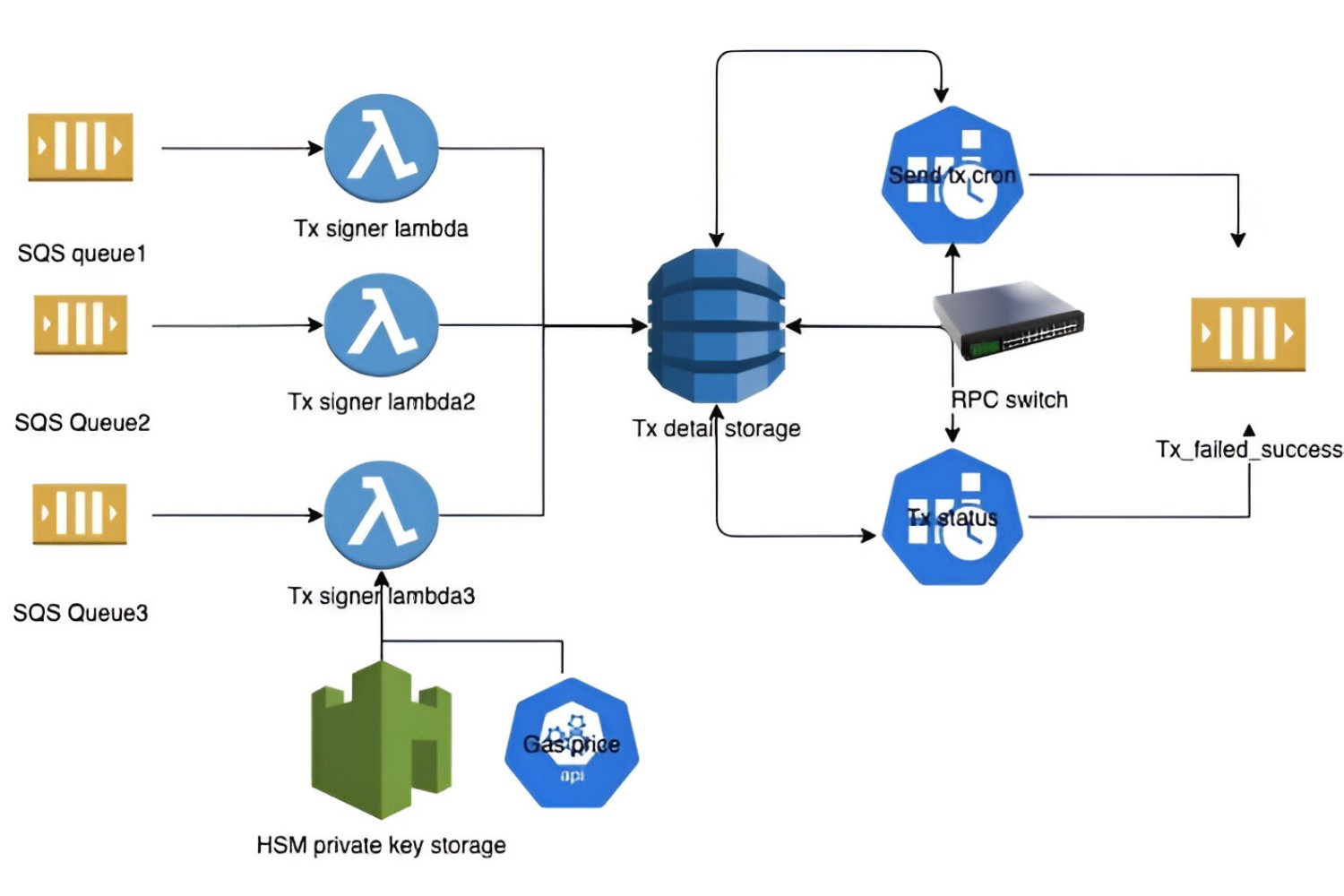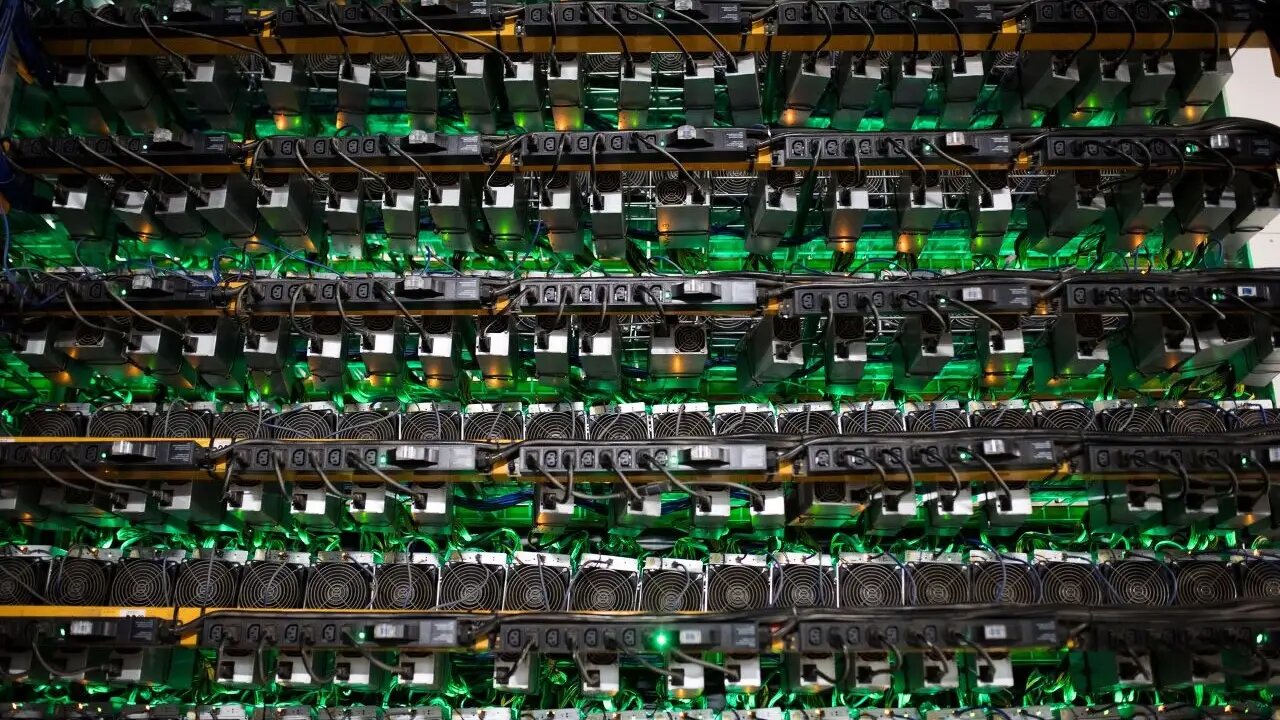Introduction
In the world of blockchain technology, Ethereum has emerged as one of the most prominent and widely-used platforms. It provides a decentralized environment for executing smart contracts, powering decentralized applications (dApps), and facilitating secure transactions. One crucial element that plays a significant role in the Ethereum network is the concept of a nonce.
A nonce, short for “number only used once,” is a unique and incremental value assigned to each transaction or message sent on the Ethereum network. It serves several important purposes, such as ensuring the order and integrity of transactions, preventing double-spending, and facilitating secure execution of smart contracts.
The nonce acts as a sequential identifier that distinguishes one transaction from another. Every Ethereum account has an associated nonce, which is an integer starting from zero and increments by one for each subsequent transaction. This means that each transaction sent from an account must have a unique nonce value.
By maintaining a strict order of nonces, the Ethereum network can effectively track and verify the sequence of transactions. This prevents malicious actors from manipulating the order of transactions or attempting to execute multiple conflicting transactions simultaneously.
Additionally, the nonce plays a crucial role in preventing double-spending, a potential vulnerability in decentralized networks. With the use of nonces, the Ethereum network ensures that no two transactions with the same nonce can be included in a block. This prevents the same funds from being spent multiple times, thus maintaining the integrity of the blockchain.
In the context of smart contracts, the nonce is equally important. Each smart contract has its own unique nonce, and it helps safeguard against replay attacks. By including the contract’s nonce in the transaction data, the Ethereum network ensures that a given transaction can only be executed once, preventing unauthorized repetitions or manipulation.
The nonce also provides a level of accountability for actions performed on the Ethereum network. When viewing a transaction on a block explorer or through other interfaces, the nonce allows users to track the chronological order of transactions and identify any inconsistencies or unexpected behaviors.
Understanding the significance of nonces is integral to successfully navigating the Ethereum network. Whether you are a developer working with smart contracts or simply a user sending transactions, having a solid grasp of nonces will ensure the smooth execution and integrity of your interactions on the Ethereum platform.
Definition and Purpose of a Nonce
In the context of computer science and cryptography, a nonce is a unique value used only once. It is commonly employed in systems that require secure and ordered communication, such as blockchain networks. In the Ethereum ecosystem, a nonce is a fundamental component that serves multiple purposes.
The primary purpose of a nonce in Ethereum is to maintain the order and integrity of transactions. Each transaction sent on the Ethereum network is assigned a unique nonce value. This nonce acts as a sequential identifier, ensuring that transactions are processed in the order they were sent. The Ethereum network verifies the nonces of incoming transactions, and if a transaction with a higher nonce than the current nonce of an account is received, it will be rejected.
Another crucial role of the nonce is in preventing double-spending attacks. Double-spending refers to the act of spending the same funds more than once. By assigning a unique nonce to each transaction, Ethereum ensures that no two transactions with the same nonce can be included in a block. If an attacker attempts to spend the same funds by creating multiple transactions with the same nonce, only one of those transactions will be considered valid by the network.
Furthermore, the nonce plays a vital role in the execution of smart contracts. Each smart contract has its own associated nonce, which helps protect against replay attacks. A replay attack occurs when a transaction is maliciously repeated, leading to unintended consequences or unauthorized access to contract functionalities. By including the nonce in the transaction data, the Ethereum network ensures that a transaction can only be executed once, safeguarding against replay attacks.
In addition to maintaining transaction order and preventing double-spending or replay attacks, the nonce also enables accountability and transparency. Nonces are publicly visible on the Ethereum blockchain, allowing users to track the chronological order of transactions associated with an account. This visibility helps users verify the authenticity of transactions and detect any suspicious activities.
In summary, a nonce in Ethereum is a unique sequential value assigned to transactions. It plays a vital role in maintaining the order and integrity of transactions, preventing double-spending and replay attacks, and providing transparency and accountability on the Ethereum blockchain. Understanding the purpose and significance of nonces is crucial for anyone interacting with the Ethereum network, whether as a developer working with smart contracts or as a user sending transactions.
Nonce in Ethereum
In Ethereum, the nonce is a core element that ensures the proper functioning and security of the network. It is an integer value associated with each Ethereum account and represents the number of transactions that have been sent from that account. The nonce plays a crucial role in various aspects of Ethereum, including transaction order, preventing double-spending, and providing a means of verification.
One of the key functions of the nonce in Ethereum is to maintain the order of transactions. When a transaction is sent from an account, it must include the current nonce value associated with that account. The Ethereum network requires transactions to be processed in sequential order based on their nonce. If a transaction with a higher nonce is received before a transaction with a lower nonce, it will be considered invalid and rejected by the network. This mechanism prevents malicious actors from manipulating the order of transactions and ensures the integrity of the blockchain.
The nonce also plays a crucial role in preventing double-spending, a potential vulnerability in decentralized networks. With the nonce, Ethereum ensures that each transaction sent from an account has a unique nonce value. This prevents funds from being spent multiple times by ensuring that only one transaction with a specific nonce can be included in a block. If an attacker attempts to create multiple transactions with the same nonce in an attempt to double-spend, the Ethereum network will only consider one of those transactions as valid.
Moreover, the nonce provides a means of verification and accountability on the Ethereum network. Each transaction’s nonce is publicly visible on the blockchain, allowing users to track the chronological order of transactions associated with a particular account. This transparency enables users to validate the authenticity of transactions and detect any suspicious activities or discrepancies.
It’s important to note that the nonce value is specific to each Ethereum account and not shared across the network as a whole. This means that multiple accounts can have transactions with the same nonce, as each account maintains its own sequential ordering. Additionally, the nonce is incremented by one each time a transaction is sent, regardless of whether the transaction is successful or not. This ensures that the nonce remains unique and continues to represent the number of transactions sent from an account.
Overall, the nonce in Ethereum serves as a critical mechanism for transaction order, preventing double-spending, and offering transparency on the network. It acts as a unique identifier for each transaction and plays a pivotal role in maintaining the integrity and security of the Ethereum ecosystem.
Nonce and Transaction Order
The nonce in Ethereum plays a critical role in maintaining the order of transactions on the network. Each transaction sent from an Ethereum account must include a specific nonce value, which represents the number of transactions that have been sent from that account. This nonce value ensures that transactions are executed in a sequential and consistent order, providing security and integrity to the Ethereum network.
When a transaction is sent from an Ethereum account, it is processed based on the nonce associated with that account. The Ethereum network verifies the nonce of each transaction and ensures that they are executed in the order of their nonces. Transactions with a higher nonce value must wait for transactions with lower nonces to be processed before they are considered for execution. This mechanism prevents the manipulation of transaction order and maintains the chronological integrity of transactions recorded on the blockchain.
By enforcing transaction order based on nonces, Ethereum safeguards against various malicious activities. For example, without the nonce-based order, an attacker might attempt to manipulate the order of transactions, prioritize their own transactions ahead of others, or disrupt the natural transaction flow. However, with the nonce requirement, the Ethereum network ensures that transactions are executed in the order they were sent, following a sequential and fair process.
Another benefit of nonce-based transaction order is the prevention of replay attacks. A replay attack occurs when a transaction is maliciously repeated, resulting in unexpected consequences or unauthorized access. By requiring a unique nonce for each transaction, Ethereum ensures that a transaction can only be executed once. This prevents malicious actors from replaying old transactions and gaining unauthorized control over smart contracts or funds.
It’s worth noting that transaction reordering can occur in limited situations. When two or more transactions with the same nonce are sent by an account, they can be reordered within the same transaction block. However, the strict ordering of nonces across blocks remains intact, maintaining the overall integrity of transaction history.
Overall, the nonce in Ethereum plays a critical role in establishing and maintaining the order of transactions on the network. It allows for fair and sequential execution of transactions, preventing manipulation and ensuring the integrity of the Ethereum blockchain. By enforcing nonce-based transaction order, Ethereum provides a secure and reliable environment for decentralized applications and transactions.
Nonce in Smart Contracts
In Ethereum, the nonce not only applies to individual transactions but also extends to smart contracts. Smart contracts are self-executing contracts with the terms of the agreement directly encoded into the contract’s code. Nonces play a crucial role in ensuring the secure and reliable execution of smart contracts on the Ethereum network.
Each smart contract in Ethereum has its own associated nonce. Similar to nonces in transactions, the contract nonce acts as a sequential identifier that prevents replay attacks and ensures the uniqueness of contract interactions. When executing a transaction involving a smart contract, the transaction must include both the account’s nonce and the contract’s nonce to validate that the intended contract is being interacted with.
The contract nonce helps safeguard against replay attacks, where an adversary attempts to replay a previous transaction to achieve unintended results. By incorporating the contract nonce, Ethereum ensures that a transaction interacting with a smart contract can only be executed once. This prevents the repeated execution of transactions that could compromise contract integrity or result in unauthorized actions.
Furthermore, the contract nonce provides a fundamental mechanism for managing state changes within a smart contract. Smart contracts maintain their own internal state, and each state change typically requires a unique nonce value. This enables the Ethereum network to track and validate the sequence of state changes within the contract. The nonce allows the network to differentiate between different state transitions and ensure they are applied in the intended order, maintaining the integrity of the contract’s logic.
By incorporating nonces in smart contracts, Ethereum enhances the security and reliability of decentralized applications (dApps) built on the platform. The nonce ensures that interactions with smart contracts are unique, preventing unintended repetitions or manipulations. It also provides a means of securely managing state changes within the contract, maintaining the desired order of operations.
Developers working with smart contracts should be diligent in managing and incrementing the contract’s nonce appropriately. Careful nonce management is essential for ensuring that state changes and interactions with the contract are executed correctly and preventing conflicts or inconsistent behavior within the contract’s logic.
In summary, the nonce in Ethereum extends beyond individual transactions and applies to smart contracts as well. The contract nonce helps protect against replay attacks, ensures the uniqueness of smart contract interactions, and enables secure state management within the contract. By incorporating nonces in smart contracts, Ethereum offers a robust framework for building and executing decentralized applications.
Importance of Nonce in Ethereum
The concept of nonce is of paramount importance in the Ethereum network. It serves multiple critical purposes that contribute to the security, integrity, and efficiency of the entire blockchain ecosystem. Understanding the importance of nonce in Ethereum is vital for anyone interacting with the network, whether as a user sending transactions or a developer working with smart contracts.
One of the primary reasons for the importance of nonce in Ethereum is to maintain transaction order. By assigning a unique nonce to each transaction, Ethereum ensures that transactions are processed in the order they were sent. This sequential execution is crucial for preventing any manipulation of the transaction order and maintaining the chronological integrity of the blockchain. Without nonce-based transaction order, the network would be susceptible to various malicious activities, such as transaction reordering or prioritization.
Nonce is also crucial in preventing double-spending attacks. Double-spending refers to the act of spending the same funds more than once, which can undermine the integrity and trustworthiness of a blockchain network. By requiring a unique nonce for each transaction, Ethereum ensures that only one transaction with a specific nonce can be included in a block. This prevents malicious actors from creating multiple transactions with the same nonce and attempting to spend the same funds multiple times.
Additionally, the nonce plays a significant role in enforcing accountability and transparency on the Ethereum network. Each transaction’s nonce is publicly visible on the blockchain, allowing users to track the chronological order of transactions associated with a specific account or smart contract. This transparency enables users to validate the authenticity of transactions, detect any suspicious activities, and ensure the network’s overall integrity.
Moreover, nonces are crucial for the proper execution of smart contracts. Smart contracts have their own associated nonce, which prevents replay attacks and ensures that transactions interacting with a specific smart contract can only be executed once. The nonce plays a vital role in managing state changes within smart contracts, maintaining the correct order of operations, and preventing unintended repetitions or manipulations. This promotes secure and reliable execution of decentralized applications (dApps) built on the Ethereum platform.
Overall, the importance of nonce in Ethereum cannot be overstated. It maintains transaction order, prevents double-spending attacks, promotes accountability and transparency, and enables secure interactions with smart contracts. By understanding and appreciating the role of nonce in the Ethereum network, users and developers can effectively navigate the blockchain ecosystem, ensuring the security and integrity of their transactions and interactions.
Recommended Practices for Working with Nonces
Working with nonces in Ethereum requires careful attention to ensure the accurate and secure execution of transactions. Follow these recommended practices to effectively manage nonces and maintain the integrity of your interactions on the Ethereum network.
1. Properly increment nonces: Ensuring the correct ordering of nonces is crucial. Each transaction sent from an account must have a nonce value that is one greater than the previous transaction. It is essential to keep track of the current nonce value and increment it appropriately to avoid transaction rejections or inconsistencies.
2. Handle failed transactions: In case of a failed transaction, it is crucial not to skip or reuse the nonce assigned to that transaction. Failed transactions still count towards the nonce and should be taken into account when incrementing the nonce for subsequent transactions.
3. Monitor transaction confirmations: Keep track of the confirmation status of your transactions to ensure they have been successfully included in a block. This is important for maintaining the correct nonce order and preventing any discrepancies that may occur due to delayed confirmations or network congestion.
4. Implement nonce tracking: Maintain a reliable system for tracking and managing nonces, particularly when working with multiple accounts or interacting with smart contracts. This can involve keeping a record of the current nonce for each account or contract and updating it accordingly for every new transaction.
5. Consider gas price adjustments: Gas price fluctuations can sometimes cause transaction failures or delays. It is advisable to be prepared for such situations by adjusting the gas price or re-submitting transactions with higher gas fees to ensure their prompt execution without disrupting the nonce order.
6. Validate nonce order: Before sending a transaction, it is a good practice to verify the expected nonce order. Check the current nonce of the account or smart contract against the expected nonce to ensure accuracy and avoid any potential transaction rejections.
7. Understand smart contract nonces: When working with smart contracts, consider the unique nonces associated with each contract. Ensure that transactions interacting with a specific smart contract include the current nonce of both the account and the contract, as this serves as an additional layer of security and prevents replay attacks.
By following these recommended practices, you can effectively manage nonces and ensure the proper order and security of your transactions on the Ethereum network. Paying attention to nonce incrementation, handling failed transactions, monitoring confirmations, implementing nonce tracking, considering gas price adjustments, validating nonce order, and understanding smart contract nonces will contribute to a seamless and secure experience when working with nonces in Ethereum.
Conclusion
The concept of nonce holds significant importance in the Ethereum network, playing a pivotal role in maintaining transaction order, preventing double-spending attacks, and ensuring overall integrity and security. The nonce provides a sequential identifier for transactions and smart contracts, allowing the Ethereum network to enforce a strict order of execution and prevent malicious activities.
By requiring a unique nonce for each transaction, Ethereum safeguards against the manipulation of transaction order and ensures that transactions are processed in the order they were sent. This mechanism protects the chronological integrity of the blockchain and promotes fairness among network participants.
Additionally, the nonce acts as a critical defense against double-spending attacks. By assigning a unique nonce to each transaction, Ethereum prevents the same funds from being spent multiple times, thus maintaining the integrity of the blockchain and preserving trust within the network.
In the context of smart contracts, nonces provide an extra layer of security by preventing replay attacks. Each smart contract has its own associated nonce, ensuring that transactions interacting with a specific contract can only be executed once. This prevents unauthorized repetitions or manipulations, making smart contracts more reliable and secure.
Understanding the importance of nonces in Ethereum is vital for users and developers interacting with the network. Proper management of nonces, including accurate incrementation, handling of failed transactions, and regular monitoring of transaction confirmations, is crucial for maintaining the proper order and reliability of interactions on the Ethereum blockchain.
In conclusion, nonces are integral to the functioning and security of the Ethereum network. They enable the maintenance of transaction order, prevention of double-spending attacks, and secure execution of smart contracts. By following recommended practices and embracing the significance of nonces, users and developers can navigate the Ethereum ecosystem with confidence, ensuring the secure and efficient operation of their transactions and interactions.

























